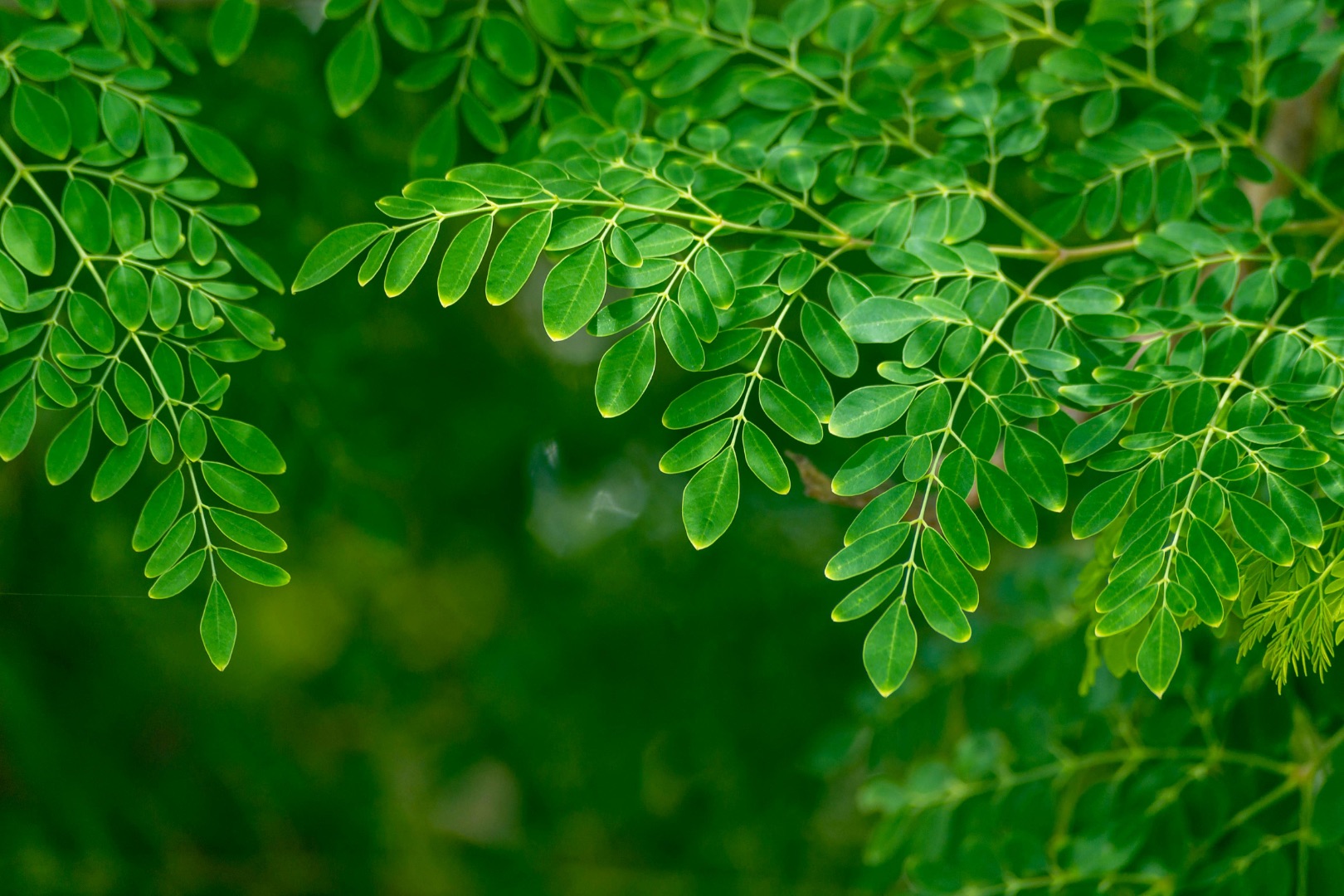For centuries, moringa (Moringa oleifera) was a familiar part of life in parts of South Asia and East Africa — a backyard tree whose leaves and pods went straight into the cooking pot. Today, it’s also a global commodity, appearing in smoothie powders, energy bars, and beauty oils from Dallas to Dubai — and now, Texas farms are beginning to find their place in this growing market.
📖 Also read: Moringa Health Claims: What the Science Actually Says — what’s real, what’s marketing, and what science still can’t say.
🌱 Traditional Roots and Local Uses
Moringa’s native range stretches from the Himalayan foothills of India, Pakistan, and Nepal into parts of Africa. In these regions, moringa has long been:
- A food crop: Fresh leaves sautéed like spinach, tender pods (“drumsticks”) in curries, and seed oil used for cooking.
- A medicinal plant: Featured in Ayurvedic and traditional African medicine for its perceived healing properties.
- A farm helper: Leaves and pods fed to livestock; trees planted for shade, windbreaks, and soil improvement.
Historically, production was small-scale — planted in home gardens or community plots, harvested for local use rather than trade.
📈 The Wellness Market Boom
In the early 2000s, moringa began catching the attention of the global wellness industry. Marketed as a “miracle tree” for its nutrient density, it moved from local diets into export markets.
- India became the top global exporter, shipping dried leaves and powder worldwide.
- Kenya, the Philippines, and other producers expanded to meet export demand.
- Moringa appeared in protein powders, fortified snacks, teas, and capsules.
💡 Market snapshot: In North America alone, moringa product sales reached USD 1.7 billion in 2023 and are projected to double by 2030, according to industry data from Zion Market Research. Explore more in Where Moringa Grows — and How Texas Fits into the Global Landscape.
⚖️ Economic Opportunities and Risks
The moringa boom has created both promise and pitfalls for growers:
Opportunities:
- Year-round harvest in tropical climates
- Multiple product forms (fresh, dried, oil)
- Premium prices in export markets
Risks:
- Price volatility as supply expands
- Inconsistent quality control
- Unequal profit distribution — smallholder farmers may earn far less than processors or exporters
For some producers, especially cooperatives and certified fair trade farms, moringa has become a reliable income stream. For others, the economics are less certain.
🌿 Sustainability Considerations
Moringa’s agronomic strengths make it appealing in an era of climate uncertainty:
- Drought-tolerant once established
- Thrives in poor soils
- Minimal synthetic input needs
However, scaling up has its challenges:
- Monocropping can reduce biodiversity and degrade soil over time.
- Water use rises when grown for intensive export processing.
- Labor demands for hand-harvesting leaves can be high.
In response, some growers are incorporating moringa into agroforestry systems, interplanting with other crops to boost biodiversity and soil health.
🔄 New Directions in Moringa Production
The moringa market is diversifying beyond dried powder:
Research is also underway on improved cultivars to increase yield and nutrient content, potentially opening the door to more commercial-scale production in non-tropical regions.
🤠 Texas in the Global Story
Texas is currently a micro-producer in the moringa world, but its climate — particularly in the south — can support seasonal or even near year-round production.
- North Texas: Seasonal production during warm months, with some farms using greenhouses to extend the season.
- South Texas: Potential for longer harvest windows in frost-free microclimates.
- Markets: Farmers markets, CSA boxes, direct farm sales, and educational workshops.
👉 Meet a Local Producer: Deb Terrell at Nature’s Circle Farm connects Texas customers with moringa through experiences that highlight its most versatile products — golden moringa oil and fragrant moringa tea. Visitors can explore the trees, learn how the oil is pressed, taste freshly brewed tea, and see how these products fit into a global story of farming innovation. 📅
.📌 Bottom Line
Moringa’s journey from backyard tree to global superfood is still unfolding. For Texas farmers, it represents a niche market with room to grow — and for visitors, it’s a chance to see a global crop in a local setting. From workshops to fresh leaf sales, farms are inviting Texans to be part of the next chapter in moringa’s story.
📚 Sources
- Zion Market Research (2023). Moringa Products Market by Type and Region, 2022–2030.
🌱 Related Moringa Articles & Experiences
- Moringa Health Claims: What the Science Actually Says — fact-check the “miracle tree” hype.
- Moringa Oil: What North Texas Visitors Can Learn from This Ancient Plant — see small-batch pressing in action.
- Moringa Tea in Texas — benefits, brewing tips, and flavor pairings.
- Where Moringa Grows — and How Texas Fits into the Global Landscape — from India to Texas fields.
- From Leaf to Oil: What Farmers and Makers Do with Moringa — the many products from this versatile plant.






